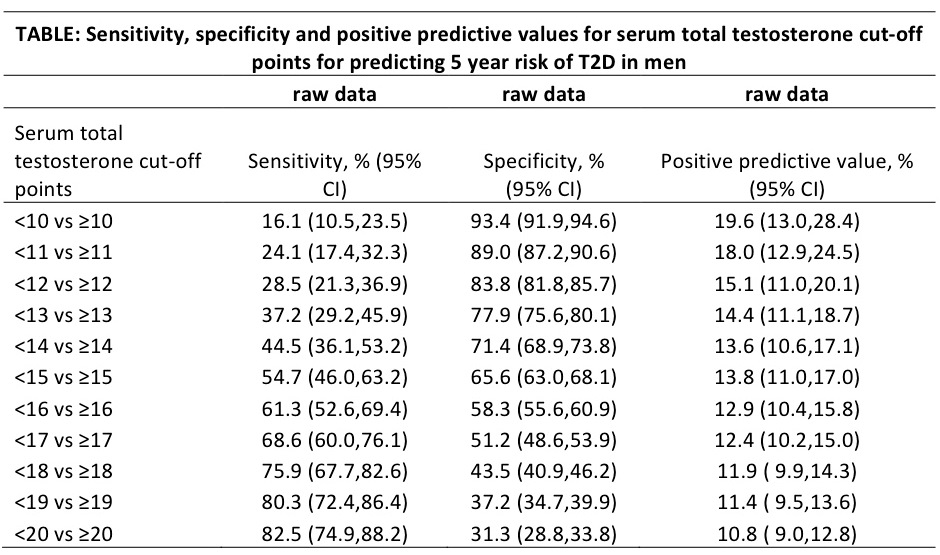Poster Presentation Australian Diabetes Society and the Australian Diabetes Educators Association Annual Scientific Meeting 2016
Predictive value of serum testosterone for type 2 diabetes risk assessment in men (#279)
Background: Effective prevention of type 2 diabetes (T2D) requires early identification of high-risk individuals who might benefit from intervention. We sought to determine whether low serum testosterone, a novel risk factor for T2D in men, adds clinically meaningful information beyond current T2D risk models.
Methods: The Men Androgen Inflammation Lifestyle Environment and Stress (MAILES) study population consists of 2563 community-dwelling men aged 35–80 years in Adelaide. 1655 participants without diabetes at baseline were followed for 5-years. T2D was defined by self-reported diabetes, or fasting plasma glucose (FPG) ≥7.0mmol/L (126.1mg/dL), or glycated haemoglobin (HbA1c)≥6.5%, or diabetes medications. Risk models were tested using logistic regression models. Sensitivity, specificity, positive predictive values (PPV) where used to identify the optimal cut-off point for low serum testosterone for incident T2D and the area under the receiver operating characteristic (AROC) curve was used to summarise the predictive power of the model. 15.5% of men had at least one missing predictor variable; addressed through multiple imputation.
Results: The incidence rate of T2D was 8.9% (147/1655) over a median follow-up of 4.95-years. Serum testosterone level predicted incident T2D (relative risk 0.96 [95%Confidence Intervals: 0.92,1.00]) independent of current risk models including the AUSDRISK, but did not improve corresponding AROC statistics. A cut-off point of <16nmol/L for low serum testosterone, which classified about 43% of men, returned a PPV of 12.9% (10.4,15.8). A cut-off point of <10nmol/L for low serum testosterone, which classified about 8% of men, returned a PPV of 19.6% (13.0,28.4).
Conclusions: One in five men age ≥35years with low serum testosterone developed T2D over 5 years. Independent of current T2D risk models, screening for low serum testosterone would identify a large subgroup (8%) of men who might benefit from targeted preventive interventions.
